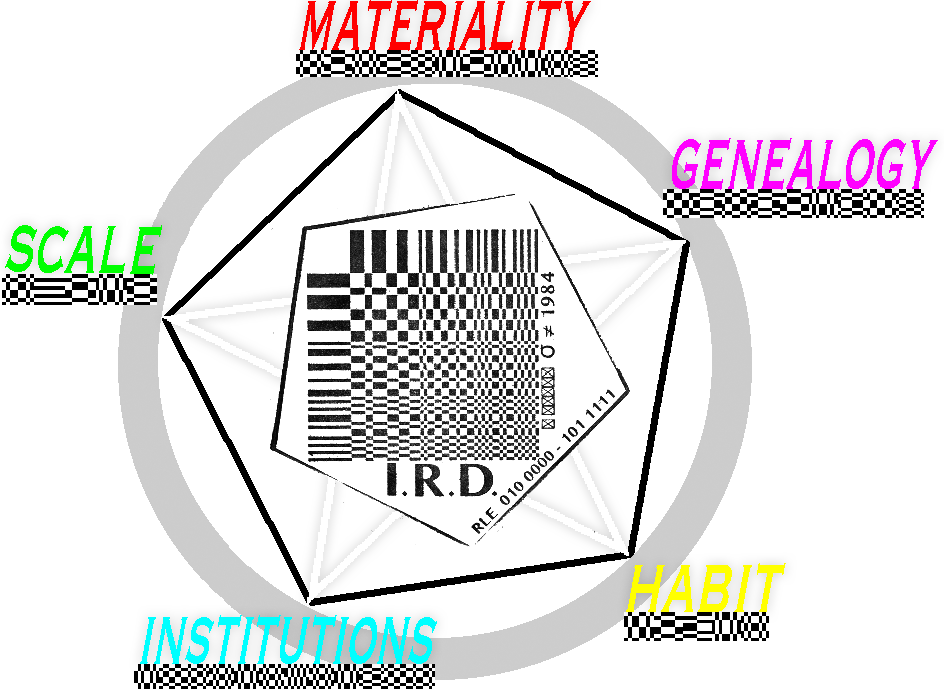11/02/2009
Glitch Studies Manifesto (4)
4. Use the glitch as an exoskeleton of progress. Find catharsis in disintegration, ruptures and fractures.
Manipulate, crack and break different actors: bend them towards the point where they become something new.
The glitch is a wonderful interruption that shifts an object away from its ordinary form and discourse. For a moment I am lost, in awe, asking myself what this other utterance is, how was it created. Is it perhaps ...a glitch? But once I named it, the momentum -the glitch- is no more...
The glitch has no solid form or state through time; it is an ephemeral, unexpected, abnormal mode of operandi, a break from (one of) the many flows, a grinch. As my understanding of the glitch changed and I named it, so did the equilibrium of the (former) glitch itself: it has vanished into the realm of new conditions.
Determining what a glitch is, is often misunderstood as a subjective act. We have to realize that the glitch depends on more than just a personal or even a social definition. The glitch involves different levels of reading at the same time: it is a form of micro-politics that causes breaks within technological, social, political and many other (flows within) systems. As semantic terrorism within an irrational matrix it temporarily voids all possibilities for understanding. But somewhere within these constructed ruins of meaning a feeling of triumph exists; a hopeful feeling that there is something more than just destruction. The negative feeling makes place for an intimate experience of a machine (or program), a system showing its formations and its flaws – as a holistic celebration rather than a particular perfection it reveals a new opportunity, or a spark of creative energy. A feeling that something new is about to be created.
The derivative art form, conveniently called 'glitch art', moves like the weather; sometimes it evolves very slowly while at other times it can strike like lightning. The art works within this realm can be disturbing, provoking and horrifying. Beautifully dangerous, they can at once take all the tensions of other possible compositions away. These works stretch boundaries and generate new possibilities: as an avant-garde of mishaps they break up previously sealed politics and force a catharsis of conventions, norms and believes.
But the word 'glitch' within 'glitch art' means more than just the technological definition of glitch. Glitch art does not just take place on a surface, and does not just disappear after its tipping point. This art form is also about what happens after the tipping point, how media transgress into a new mode and even what happens after this transgression (the normalization). This mode can be continuous, or exist just as a reflection (a memory) in our mind. Furthermore, it can choose to focus on the procedural, or more on a final design. One way or the other, the choice to 'accept' the glitch by naming it (glitch art) and to welcome it as a new form, means to accept change and to welcome a new dialectic.
Glitch art is therefore not always (or by everyone) experienced as an art of the momentum; many works have already passed their tipping point and are now created by a new method and exist as a new, recognizable form, the design of glitch.
Glitch art not only depends on its system but also on the different actors within these systems. Not only the artist who creates the work of glitch art is 'responsible' for the glitch. The 'foreign' input (wrongly encoded syntaxes that lead to forbidden leakages and data promiscuity), the hardware and the software (the 'channel' that shows functional? collisions) and the audience (who is in charge of the reception, the decoding) can also be responsible. All these actors are positioned within different (but sometimes overlapping) flows of which the final product can be described or recognized as glitch art.
Another reason to call these works of intended, controlled glitch art 'glitchy', is because these works exists within different systems of perception; for instance the system of production and the system of reception. While the artist might not call his production method glitchy, the audience could still believe in the glitchy-ness of the result. This is why an intended error can still be called erroneous (glitchy).
Subscribe to:
Post Comments (Atom)



No comments:
Post a Comment